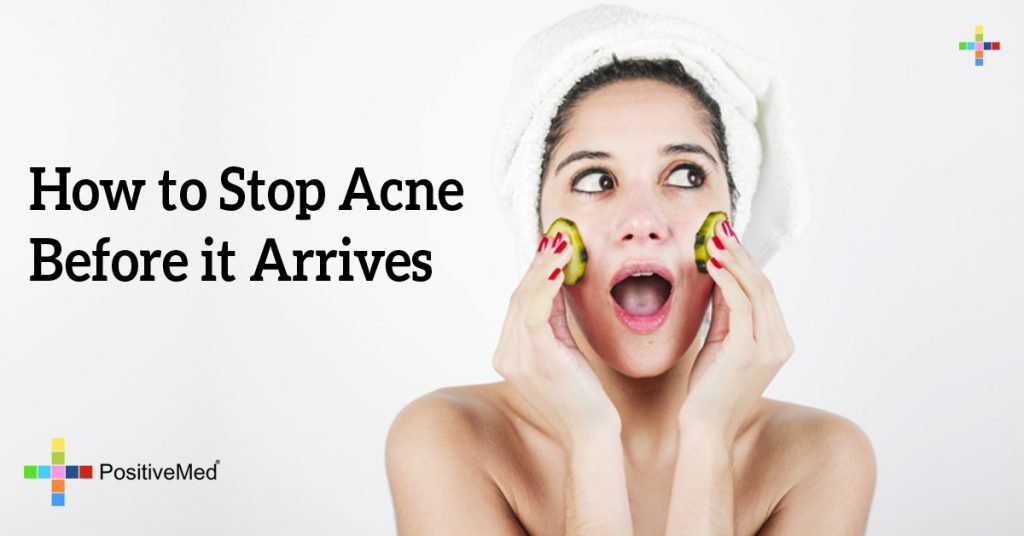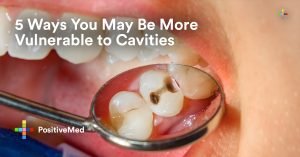
The Complete Guide to Oily SkinHow to Stop Acne Before it Arrives
Skin oils (also called sebum) produced by your skin’s sebaceous glands are necessary to keep our skin healthy and supple. When not enough oil is produced, our skin begins to age and becomes dry, scaly and itchy! On the other hand, over-production of sebum may eventually lead to acne.
Under normal conditions, the sebaceous glands are a “well-oiled machine” (no pun intended) and they make just the right amount of sebum, which flows up through the pores of the skin to the surface to maintain healthy skin. When excess sebum is produced, it can lead to clogged pores, which accumulate this excess oil, dead skin cells and bacteria and create a perfect recipe for forming whiteheads, blackheads (comedones) and pimples. Therefore, the first step in pimple formation (AKA acne) is the over-production of sebum, and your first visible sign of a potential acne problem is… oily skin. Since an ounce of prevention is better than a pound of cure, it makes sense to start preventing acne at the first sign of a problem: OILY SKIN.
Since we have now established that oily skin is a prelude to acne, we can take a dual-pronged approach to address this issue:
Decrease or return sebaceous gland secretions to normal levelsImplement a safe and effective skincare regimen to deal with the oily skin
Stage #1
The key driver to increasing sebum production is a change in level of hormones circulating in your blood, in particular, androgens. Men and women both have androgens (testosterone and its analogs) and it is thought that an increase in these hormones is the main culprit for oily skin. The majority of the $e* hormones (estrogen, progesterone and testosterone) in our blood are bound to a protein called SHBP ($e* Hormone Binding Protein) and therefore do not increase oil production in your skin. It is the “free levels” (not bound to SHBP) that cause the increased production of sebum. This helps explain why some women have more oily skin and an acne breakout during their menstrual cycle when hormone levels fluctuate. Similarly, this helps explain why teenagers are often displaying oily skin and are susceptible to acne especially during puberty when hormone levels are again fluctuating.

So look for a solution to address the oily skin (over-secretion of sebum) as a precursor not only to non-shiny complexion but also pimple-free skin
. The only way to actually deal with oily skin is from the inside, so you prevent the impact of hormones on the sebaceous glands. While you decrease the production of sebum, you are also working toward balanced skin and taking the first step in preventing a potential acne cycle.
Now that you understand what causes your oily skin and you are on the way to locating the product that can help you manage your oily skin, you may actually appreciate the fact that oily skin is actually a warning signal that alerts you that acne is on the way and that you can stop it before it even arrives!
Stage # 2
Even when you try to control your oily skin from the inside, there may be some excess sebum produced, which can be dealt with by using safe, gentle, and natural skincare steps. Remember, it is not just the overproduction of sebum that leads to pimples, but rather the fact that the pores in your skin get clogged, and because of that you see the appearance of whiteheads and blackheads. The skincare tips described in the forthcoming section will provide all you need to know about how to properly care for your oily skin.
7 Steps to Less Oily Skin
Cleanse
The first step to managing oily skin is to cleanse your face both morning and night and to use oil-absorbing masks. You need to use a gentle cleanser since harsh soaps can trigger the skin’s protective reaction and further increase oil production. For the same reason, stay away from rubbing and buffing your skin, as you may actually stimulate more oil secretion. Rather, use the “pat dry” system. Many people get good results from cleaning oily skin with coconut oil that dissolves sebum
.
If mild cleansers do not help, look at products containing low grades of beta-hydroxy acid (BHA’s). BHA’s are lipid soluble, what means they’re able to fully dissolve in oil (or fat). This makes BHA’s better at penetrating pores when they are “over-stuffed” with sebum. Avoid salicylic acid and alcohols as they may over-dry and irritate the skin.
You can also try a raspberry mask, which will help to dissolve more skin oil and as a benefit will keep your skin less shiny but still glowing.
Tone
Dermatologists are divided on whether the oil-reducing properties of toner are legitimate. Still, if you like using them, apply mild toner only on oily areas of the skin, such as the forehead, nose, and chin. Avoid using them on areas that tend to be dry or you’re likely to create dry patches on your skin. Most people actually have combination skin—oily in some places, dry in others, and not just “oily” or just “dry” skin—so you need to accommodate the needs of those different characteristics of your skin. After all, it is the largest organ in your body!
Try this DIY mild antiseptic, yet moistening chamomile astringent.
Blot
Cosmetic blotting papers offer a great option for removing oil because they don’t dry out your skin. Apply to oily areas, such as forehead, nose, and chin. Don’t scrub your skin with the sheet of blotting paper. Instead, simply press it against the oily area long enough to absorb oil, usually 15 to 20 seconds. Some blotting papers are lightly powdered, which further reduces shine.
Oil-Controlling Masks
We mentioned that you can try a gentle raspberry mask, and you can also use a clay mask once a week to help tighten pores and refine them. Keeping the skin clean without over-treating it will certainly help in the refining process by keeping the pores clear of dead cells, stale makeup, dirt, etc.
Exfoliate
Avoid facial scrubs on oily skin. It stimulates more oil production. Instead, use products containing AHA’s (alpha hydroxy acids: glycolic acid, citric acid, lactic acid) or BHA’s (beta hydroxy acids: salicylic acid) or enzymes from pineapple, milk, pumpkin, etc., which will help to dissolve the “glue” holding dead skin cells to the skin and will potentially unclog your pores.
We recommend to also veer away from products that contain alcohol and also make your skin tingle or hurt. The product may feel like its helping with your oily skin, but tingling is not helpful for anyone’s skin. When your skin tingles, it means it is being irritated, and irritation is always bad for skin. Tingling is just one way your skin is telling you it is hurting, and the cumulative damage will end up causing more problems.
Protection
It is a myth (a rather dangerous one) that if you have oily skin, sunscreen is not necessary. Sunscreen is essential for preventing wrinkles and reducing red marks as well as reducing the risk of skin cancer. If you’ve avoided sunscreens because you’ve tried some that are too greasy or make your skin break out, look for a natural, mattifying sunscreen or even matte-finish makeup with SPF of 25 or higher. Here are some other recommendations too.
Hydrate
Yes—oily skin needs to drink too. After cleansing, use a lightweight liquid, gel, or serum that contains no pore-clogging ingredients, and that can provide hydration while treating your skin to the essential ingredients all skin types need to function in a normal, healthy manner, such as antioxidant, cell-communicating and skin-repairing ingredients.
Keep all of this in mind, and you’ll be on your way to shining for all the right reasons!
 Dr. Agnes Olszewski, CEO of Herborium, natural medicine expert
Dr. Agnes Olszewski, CEO of Herborium, natural medicine expert
“My work in China in the pharmaceutical and healthcare sector, and my personal experience while growing up in Europe, inspired me to develop Herborium®, a novel Botanical Therapeutics® company, based on a new, innovative healthcare concept that combines science and nature. Our approach has already been proven up to 98% effective in our acne treatment, AcnEase®.”







